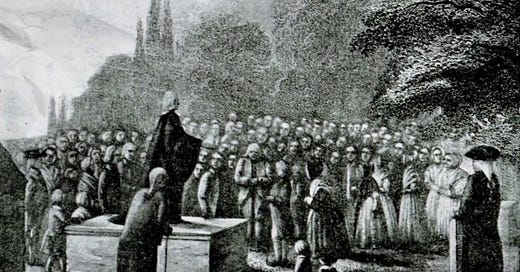“Yadā have pātubhavanti dhammā, ātāpino jhāyato brāhmaṇassa…”
— Udāna 1.1
Evaṃ me sutaṃ – "Thus have I heard."
This is how the Paṭhamabodhisuttaṃ, the first sutta in the Bodhivagga of the Udāna, begins. It takes us to the very moment of the Buddha’s awakening—seven days after his great realization under the Bodhi tree on the banks of the Nerañjarā River, in Uruvelā.
He is seated in the stillness of liberation (vimuttisukha), not yet teaching, not yet moving—simply dwelling in the quiet joy of freedom. For an entire week, the Buddha remains motionless in meditative equipoise, tasting the profound peace that follows enlightenment. This is a powerful image of contemplative silence, the kind of silence that knows, and does not need to speak.
But then, in the first watch of the night after that week, something stirs. He reflects on paṭiccasamuppāda—Dependent Co-arising. This is not yet the beginning of his teaching mission, but it is the moment where insight into the conditional nature of suffering becomes clear enough to articulate.
“Iti imasmiṃ sati idaṃ hoti…”
“This being, that becomes; from the arising of this, that arises.”
The Wheel of Becoming
The Buddha carefully contemplates each link in the chain of dependent origination:
Avijjā → Saṅkhārā — Ignorance conditions volitional formations.
Saṅkhārā → Viññāṇaṃ — These shape consciousness.
Viññāṇaṃ → Nāmarūpaṃ — Consciousness supports name-and-form.
Nāmarūpaṃ → Saḷāyatanaṃ — From this, the six sense bases arise.
Saḷāyatanaṃ → Phasso — Contact follows.
Phasso → Vedanā — Contact gives rise to feeling.
Vedanā → Taṇhā — Feeling conditions craving.
Taṇhā → Upādānaṃ — Craving leads to clinging.
Upādānaṃ → Bhavo — Clinging conditions becoming.
Bhavo → Jāti — Becoming leads to birth.
Jāti → Jarāmaraṇaṃ… — From birth comes aging and death, with all the suffering, grief, and despair they entail.
And so, the Buddha sees: this is how suffering arises—not from a single cause, but through an interdependent web of conditions. Not a fixed fate, but a process.
Insight and the End of Doubt
Having seen this conditional chain clearly, the Buddha speaks a spontaneous utterance—a udāna, or “inspired utterance”:
“Yadā have pātubhavanti dhammā,
Ātāpino jhāyato brāhmaṇassa,
Athassa kaṅkhā vapayanti sabbā,
Yato pajānāti sahetudhammaṃ.”**
“When realities appear to the ardent, meditative brāhmaṇa (noble seeker),
Then all his doubts vanish—
For he fully understands things
Arising from causes.”
This verse is deeply poetic and deeply diagnostic. It tells us that the path is not one of blind belief, but of inner vision (pātubhāva). It celebrates the yogi (jhāyato) who burns with energy (ātāpī) and sees for themselves the nature of conditionality (sahetudhammaṃ).
Doubt (kaṅkhā) fades not through obedience, but through direct understanding.
Why This Moment Matters
This sutta is not just a chronicle of the Buddha's first insight after awakening—it is an invitation to us.
The Paṭhamabodhisuttaṃ reminds us that enlightenment is not magic. It is clarity. The path is made of seeing—patiently, thoroughly, with radical honesty—how suffering arises in our own minds.
Each of us, when sitting still, may one day glimpse how “this being, that becomes.” And in that moment, like the Buddha beneath the Bodhi tree, we too may begin to understand the things that arise from causes.
This is the very heart of the Dhamma: no god, no blind faith—just a clear seeing of what is.
If you're touched by this quiet scene from Uruvelā, take a few breaths today and reflect on this early teaching. Where in your own life do you see this chain playing out? Can you trace it back—not with judgment, but with care?
Yato pajānāti sahetudhammaṃ—when we see with wisdom, even just a little, we start to walk the same path.
Stay tuned for the next reflection in the Bodhivaggo series.
If you found this post meaningful, feel free to share or leave a comment.





